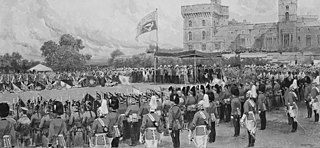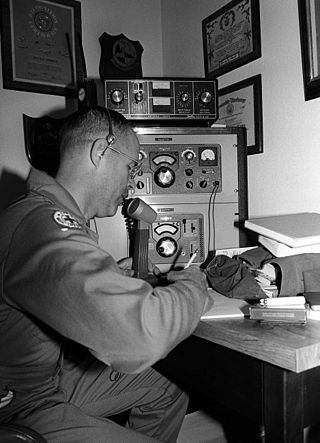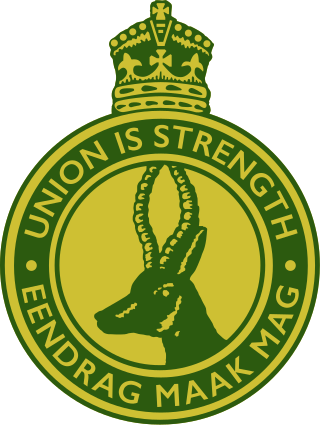
A militia is generally an army or some other fighting organization of non-professional and/or part-time soldiers; citizens of a country, or subjects of a state, who may perform military service during a time of need, as opposed to a professional force of regular, full-time military personnel; or, historically, to members of a warrior-nobility class. When acting independently militias are generally unable to hold ground against regular forces; militias commonly support regular troops by skirmishing, holding fortifications, or conducting irregular warfare, instead of undertaking offensive campaigns by themselves. Local civilian laws often limit militias to serve only in their home region, and to serve only for a limited time; this further reduces their use in long military campaigns. Militias may also, however, serve as a pool of available manpower for regular forces to draw from, particularly in emergencies.

The Israel Defense Forces, alternatively referred to by the Hebrew-language acronym Tzahal (צה״ל), is the national military of the State of Israel. It consists of three service branches: the Israeli Ground Forces, the Israeli Air Force, and the Israeli Navy. It is the sole military wing of the Israeli security apparatus. The IDF is headed by the Chief of the General Staff, who is subordinate to the Israeli Defense Minister.

The Army Reserve is the active-duty volunteer reserve force of the British Army. It is separate from the Regular Reserve whose members are ex-Regular personnel who retain a statutory liability for service. The Army Reserve was known as the Territorial Force from 1908 to 1921, the Territorial Army (TA) from 1921 to 1967, the Territorial and Army Volunteer Reserve (TAVR) from 1967 to 1979, and again the Territorial Army (TA) from 1979 to 2014.

The Territorial Force was a part-time volunteer component of the British Army, created in 1908 to augment British land forces without resorting to conscription. The new organisation consolidated the 19th-century Volunteer Force and yeomanry into a unified auxiliary, commanded by the War Office and administered by local county territorial associations. The Territorial Force was designed to reinforce the regular army in expeditionary operations abroad, but because of political opposition it was assigned to home defence. Members were liable for service anywhere in the UK and could not be compelled to serve overseas. In the first two months of the First World War, territorials volunteered for foreign service in significant numbers, allowing territorial units to be deployed abroad. They saw their first action on the Western Front during the initial German offensive of 1914, and the force filled the gap between the near destruction of the regular army that year and the arrival of the New Army in 1915. Territorial units were deployed to Gallipoli in 1915 and, following the failure of that campaign, provided the bulk of the British contribution to allied forces in the Sinai and Palestine Campaign. By the war's end, the Territorial Force had fielded twenty-three infantry divisions and two mounted divisions on foreign soil. It was demobilised after the war and reconstituted in 1921 as the Territorial Army.

Conscription in Australia, also known as National Service following the Second World War, has a controversial history which dates back to the implementation of compulsory military training and service in the first years of Australia's nationhood. Military conscription for peacetime service was abolished in 1972.

The Indian Army during British rule, also referred to as the British Indian Army, was the main military force of the British Indian Empire until 1947. It was responsible for the defence of both British India and the princely states, which could also have their own armies. As quoted in the Imperial Gazetteer of India, "The British Government has undertaken to protect the dominions of the Native princes from invasion and even from rebellion within: its army is organized for the defence not merely of British India, but of all possessions under the suzerainty of the King-Emperor." The Indian Army was an important part of the forces of the British Empire, in India and abroad, particularly during the First World War and the Second World War.

Military service is service by an individual or group in an army or other militia, air forces, and naval forces, whether as a chosen job (volunteer) or as a result of an involuntary draft (conscription).

Auxiliaries are support personnel that assist the military or police but are organised differently from regular forces. Auxiliary may be military volunteers undertaking support functions or performing certain duties such as garrison troops, usually on a part-time basis. Unlike a military reserve force, an auxiliary force does not necessarily have the same degree of training or ranking structure as regular soldiers, and it may or may not be integrated into a fighting force. Some auxiliaries, however, are militias composed of former active duty military personnel and actually have better training and combat experience than their regular counterparts.

In German-speaking countries, the term Landsturm was historically used to refer to militia or military units composed of conscripts who are not in regular army. It is particularly associated with Prussia, Germany, Austria-Hungary, Sweden, and the Netherlands.

Compulsory military training (CMT), a form of conscription, was practised for males in New Zealand between 1909 and 1972. Military training in New Zealand has been voluntary before then and ever since.

A reservist is a person who is a member of a military reserve force. They are otherwise civilians, and in peacetime have careers outside the military. Reservists usually go for training on an annual basis to refresh their skills. This person is usually a former active-duty member of the armed forces, and they remain a reservist either voluntarily, or by obligation. In some countries such as Israel, Norway, Finland, Singapore, and Switzerland, reservists are conscripted soldiers who are called up for training and service when necessary.

The military ranks of Israel are the military insignia used by the Israel Defense Forces (IDF). Because the IDF is an integrated force, ranks are the same in all services The ranks are derived from those in the paramilitary Haganah, which operated during the Mandate period in order to protect the Yishuv.

The National Service Act 1964 (Cth) is a repealed amendment of the Parliament of the Commonwealth of Australia, passed on 24 November 1964. It amended the National Service Act 1951 to require 20-year-old males to serve in the Army for a period of twenty-four months of continuous service followed by three years in the Reserve.

The Territorial Army (TA) is a military reserve force composed of part-time volunteers who provide support services to the Indian Army. It consists of officers, junior commissioned officers, non-commissioned officers and other personnel who hold ranks identical to those in the Indian Army, and also maintains civilian occupations. The primary role of the TA is to "relieve the regular army from static duties and assist civil administration in dealing with natural calamities and maintenance of essential services" and to "provide units for the regular army as and when required".

In the United Kingdom, military conscription has existed for two periods in modern times. The first was from 1916 to 1920, and the second from 1939 to 1960. The last conscripted soldiers left the service in 1963.
The Auxiliary Force (India) (AFI) was a part-time, paid volunteer military organisation within the British Indian Army, with recruits from British India. Its units were entirely made up of European and Anglo-Indian personnel. The AFI was formed in 1920, along with the Indian Territorial Force (ITF), replacing the Indian Defence Force (IDF).
The Indian Territorial Force (ITF) was a part-time, paid volunteer military organisation within the British Indian Army, with recruits from British India. Its units were made up of European officers and Indian other ranks. It was formed in 1920, along with the Auxiliary Force, India (AFI), replacing the Indian Defence Force (IDF).

The recent history of changes in women's roles includes having women in the military. Every country in the world permits the participation of women in the military, in one form or another. In 2018, only two countries conscripted women and men on the same formal conditions: Norway and Sweden. A few other countries have laws conscripting women into their armed forces, however with some difference such as service exemptions, length of service, and more. Some countries do not have conscription, but men and women may serve on a voluntary basis under equal conditions. Alenka Ermenc was the first female head of armed forces in any of the NATO member states, having served as the Chief of the General Staff of the Slovenian Armed Forces between 2018 and 2020.

European countries have had varying policies that confine women and military service or the extent of their participation in the national armed services of their respective countries, especially combatant roles in armed conflicts or hostile environments. While most of the countries have always allowed women to participate in military activities involving no direct aggression with the enemy, most began seeing the value of servicewomen in the armed services during the First World War when they began losing unprecedented numbers of servicemen. In the modern era, many of the European countries allow women to voluntarily pursue a career path or profession in the national armed services of their country as well as permit conscription equality, with minimal or no restrictions at all.

The Union Defence Force (UDF) comprised the armed forces of South Africa from 1 July 1912, when the Defence Act took effect, two years after the creation of the Union of South Africa, until 1957 when it was reorganised and renamed the South African Defence Force.